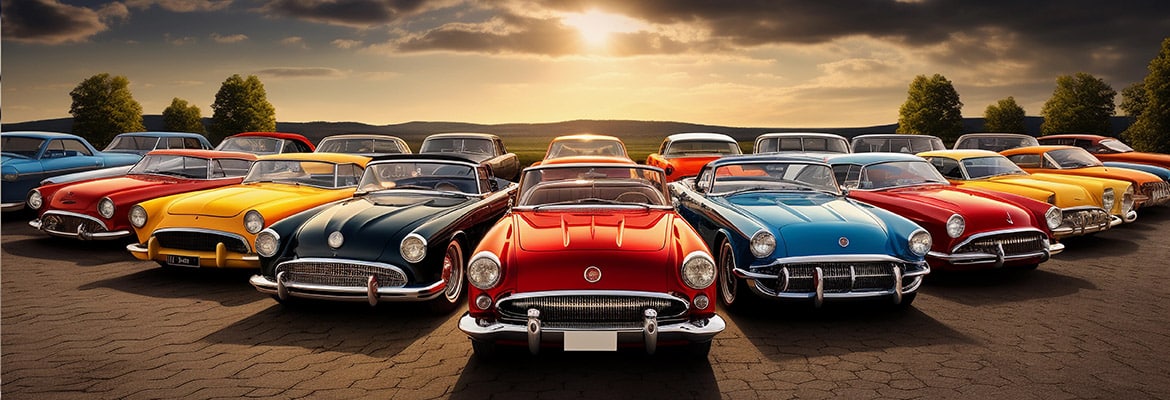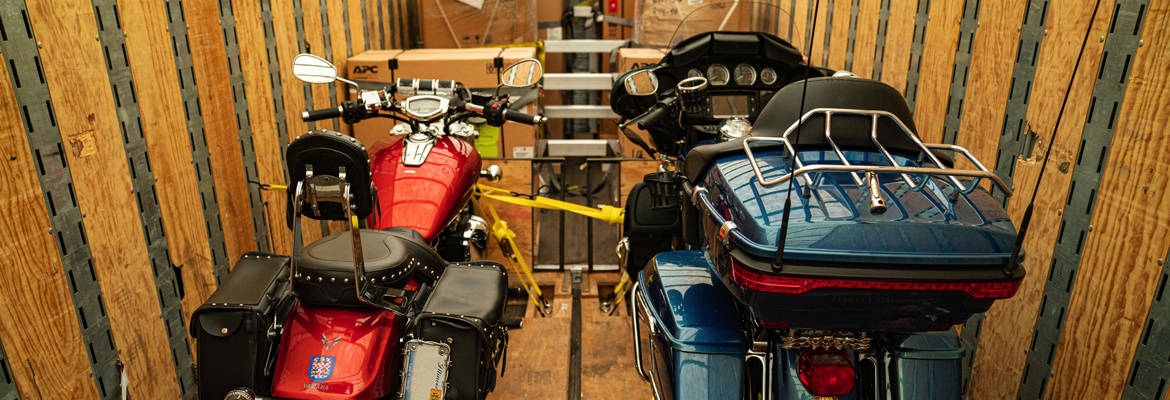Author(s)
You’ve dreamed of this moment for years: owning a classic car. Now, it’s time to share that dream with the world! But showing off your prized possession isn’t as simple as pulling up to the local cruise-in. This guide covers everything you need to know, from entering the right events to prepping your vehicle to the logistics of classic car shipping. Let’s get started by answering a few basic questions.
What is a classic car?
Every car show will have its own rules that dictate which cars are classic and which are antique, but in general, vehicles produced between 1925 and 1948 are considered classic and these vehicles have to be in good running condition. In some shows, cars with a lot of modern modifications won’t qualify as classic, but at other shows, replicas, reproductions, kit cars, racers, and heavily modified cars will still fall under the classic car umbrella.
What is an antique car?
Generally, a vehicle is labeled antique when it is more than 25 years old and has been restored to its original specs. Antique cars won’t have any modifications whatsoever and will be fully operational. More often than not the difference between a classic car and an antique car matters more when you’re insuring a vehicle than when you’re entering shows, but you should read each show’s rules carefully when you’re entering a vehicle.
What is an exotic or luxury vehicle?
Many collectors define exotic cars as rare or limited-production vehicles that focus on high-performance and distinctive styling. Some exotic cars may be considered supercars. A luxury vehicle is crafted with high-end materials and prioritizes comfort, performance, and cutting-edge technology.
How do I enter my vehicle in a car show?
As a spectator, you probably didn’t give a lot of thought to how the classic cars in each show you attended ended up there. Now that you’re an owner, you need to be aware of the fact that registration is required to participate in most car shows.
It’s always a good idea to pre-register because space may be at a premium. Of course, registering your vehicle isn’t a guarantee you’ll be showing it. If applications will be juried, your vehicle may not make the cut.
Rules regarding when and how to register will vary from show to show and guidelines are typically posted online. If they’re not, reach out to the show organizers for more information.
Will I have to pay to enter?
Some classic car shows will require you to pay an entry fee to exhibit your vehicle. If the fee is more than you want to pay, be aware that car shows are almost always looking for volunteers to help with things like directing traffic, promoting the show, taking tickets, and other tasks. You can always try contacting the show’s organizers to offer up your time in return for a spot in the show.
What’s the easiest way to begin entering car shows?
Start by looking for nearby cruise nights. These events are usually organized by small car clubs or groups of local classic car enthusiasts who want to show off their prized vehicles. There may be a registration process, entry fees, contests, and prizes if these neighborhood clubs are organized, but in many cases, neighborhood cruise nights are simply parking lot get-togethers open to any owners who want to participate. You can find them by searching “classic car cruise nights near me.”
I’ve entered my first show. Does my classic car need more than a basic wash?
Yes! Prepping your vehicle for an upcoming show (and for classic car shipping if you’re traveling to a faraway show) is about more than just pulling off the cover and giving it a wax. Cleaning and detailing your car’s exterior and interior are important, but think about how many car shows you’ve attended where the cars were displayed with their hoods up.
Start by cleaning the engine so that any dirt and debris that sprays off will be scrubbed off of your car’s exterior when you wash that. Next, wash the wheels and rims before starting on the rest of the exterior. Then give your classic car’s interior a really thorough cleaning (or have a professional do it for you). Finally, apply a quality wax or paint sealant on the exterior. Sealants are more expensive than wax, but they will keep your classic car’s paint job looking new (and rust free) for six months at a time.
Make sure you also take some cleaning supplies to the show with you if you’re driving there or using open transport classic car shipping. That way, you can wipe off any road dust or other debris from the trip so your vehicle looks pristine at the show.
What else should I do to get my classic car show ready?
If your vehicle is in perfect condition, a very thorough cleaning is all it will need. But if you’re still in the process of restoring your classic car, now is the time to focus on getting it up to show standards. Do you have the space you need to complete your restoration? The ideal amount of workspace is a two-car garage because your car can be stored indoors in one half while you use the other half to work and store tools.
If you have to work outdoors, you should still store your classic car in the garage away from sun, weather, dirt, and dust. Cars in running condition should be driven at least once a month to prevent corrosion and ensure the engine stays in good shape. If you can’t drive it, then at the very least make a habit of starting it up now and then until it is road-ready.
The show isn’t local. Do I need extra insurance for classic car shipping?
There are a lot of good reasons to choose classic car shipping over driving to and from shows throughout the year. Your classic car may be incredibly rare or delicate, or it might have its original paint job and you’d rather not risk even a single scratch. In that case, you should look for an auto transport company with an amazing track record when it comes to classic car shipping.
It may surprise you that you won’t need extra insurance to ship your valuable classic car! In general, auto transport companies will carry full insurance coverage. Companies that specialize in classic car shipping will have much higher coverage. That said, if you feel strongly about having additional insurance you can always talk to your own insurance company about your options.
Does my vehicle need to be registered for classic car shipping?
Here’s another surprising fact: your classic car doesn’t have to be registered before shipping, but it should run well enough to be loaded onto a trailer under its own power for two reasons. First, it costs more to ship non-working classic cars, and second, it doesn’t make a lot of sense to ship a non-working vehicle. Most car shows require that the vehicles being entered are driveable.
What are the best options for classic car shipping?
Classic car shipping is one of the safest ways to get your vehicle to and from non-local car shows, but that doesn’t mean you can choose the cheapest transport option and call it a day. Enclosed transport is the best choice for classic cars because vehicles are protected against weather and road debris from pickup through delivery. Some carriers offer shift resistant transport carriers that minimize the stress of swaying during transport. Non-stacking transport is also a good choice if you want your classic car to stay squeaky clean before the show.
Ready to transport your car with Montway?
Our car shipping advisors are available by calling (888) 666-8929 to answer all your questions.
What is the showroom?
At some shows, the most beautiful, luxurious, or rarest cars are displayed in the indoor showroom. In some cases, these vehicles are brought to shows by manufacturers or big sellers, but the showroom lineup may also include special vehicles entered by individuals.
How can I make sure my classic car stands out?
To guarantee that your classic car gets as much attention as possible, devote some of your prep time to creating a car show display. Mirrors from discount stores can give people the opportunity to see parts of your car (e.g., the undercarriage or a shiny chrome tailpipe) that are interesting but hidden. A sign or display board that outlines how you’ve restored your vehicle or some information about its history can draw a crowd. And finally, to really stand out, mount your car on a car stand that lifts up the front of your vehicle so it’s taller than the surrounding cars.
As you enter more shows, you may find that you’re not getting into the categories or classes you want or receiving the recognition you desire. When you feel discouraged, consider how you can step up your display, but also remember why you started showing your car in the first place: You love your car, and that’s what matters most.

About Montway Auto Transport
Montway provides top-rated shipping services for classic car enthusiasts around the country. If you’re looking to add to your collection, or buy or sell an everyday vehicle, check out The 13 Best Websites To Buy & Sell Used Cars Online for the pros and cons of the most popular sites.
When you’re ready to transport your prized possession, contact Montway. With over 100,000 customer reviews and 250,000 vehicles shipped a year, you can trust our track record of safe, simple, and careful shipping. Learn more about our classic vehicle transport options or request an instant quote.
Read what our customers say about their experience with Montway at Montway Auto Transport reviews.








